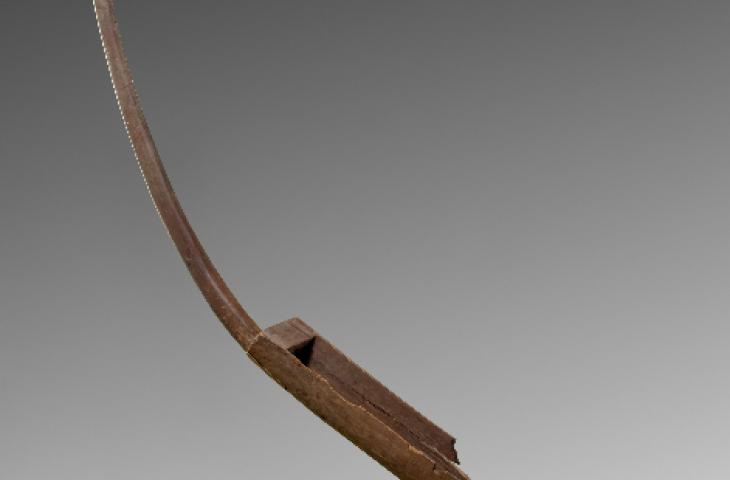Shoulder harp

Shoulder harp, Egypt, ca. 1500 BC
The harp originated during the third millennium BC in Mesopotamia and appeared in Egypt around 2700 BC. It took various forms and sizes. The shoulder harp belongs in the category of arched harps and made its appearance during the reign of Thutmosis III (ca. 1480 BC). Compared to other types of harp that remained in use in Egypt for 2 500 years, the shoulder harp disappeared from use after 100 years. Nevertheless, the harps still preserved to this day are mainly of the shoulder type. Depictions in tombs show that the instrument was carried on the left arm or shoulder, with the strings facing outwards. The sound-box was fairly small and could be up to sixty-five centimetres long. Four strings were attached to the curved neck, which projected from the sound-box, which itself was covered by an animal skin with sound holes cut into it. Beneath the skin was a thin string-holder running the entire length of the sound-box and to which the other ends of the strings were attached. The strings, skin and string-holder are missing from this instrument, but this does not detract from it being an exceptional item. It is the oldest piece in the MIM collection.